Gís Marí
Year of birth: 1991.
Where do you live: Figueira da Foz, Portugal.
Describe your art in three words: Natura Artis Magistra.
Website
Can you tell us about your journey from studying psychology to becoming a full-time painter? What inspired this dramatic career shift?
From early on in my life, I had a certain reluctance to unthinkingly accepting the things I was taught at school.
I found myself dreaming, zooming out, and abstracting the knowledge, but I never had a voice to express these inner thoughts.
After graduating from high school, when I started studying and experienced more freedom in planning my own time, I found that in the world of the arts, the dreaming that was seen as a flaw before is now a power.
I started buying paint and spent long nights painting in my student apartment, experimenting with the structure of the paint, the interaction between the paint and the canvas, and looking for strong shapes and colour combinations.
This was a world where nobody taught me what to do or think—a world with endless possibilities. Freedom.
I started missing classes and lost the motivation to study.
By my early 20s, I had dedicated my life to painting.
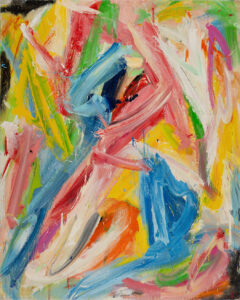 Gís Marí | Janus | 2022-2024
Gís Marí | Janus | 2022-2024
Your works are characterised by large-scale abstract expressionism. How do you approach the creation of these paintings, and what techniques do you employ?
I start out loose and energetic, but I am extremely focused. I apply a thin layer of paint and look for a form and suitable color palette.
I see painting as a conversation between me and the canvas. I apply a stroke of paint and listen to the reaction, then the next stroke. I oversee the development and the conversation continues for hours to days.
It is a process of searching and feeling. In that period, the line between mistake and success is extremely thin. I try to find what the canvas has to offer, and along the way, the canvas becomes more profound and gains personality.
I use oil paint, so a layer of paint takes time to dry. I let the canvas rest and start working on another in the meantime.
Then, over time, as the painting gets more mature, the intensity and risk of the strokes need to be the same as in the beginning.
This is why I disagree with the cliché story that a painter is scared of a blank canvas—it’s when the canvas is blank that there is nothing to lose. The more personality the painting develops, the harder it becomes to take risks because you have this already half-existing personality to lose.
If I make a mistake, even in the last phase after months of work, I cut the canvas into pieces.
But if there is no mistake, there is a time when, after weeks of contemplating, I decide that the painting is finished.
I add my signature and never repaint the work again; it is born.
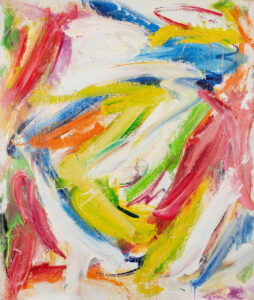 Gís Marí | Natura artis magistra | 2023
Gís Marí | Natura artis magistra | 2023
You mentioned your discomfort with the gentrifying, speedy, and money-driven environment of Amsterdam. How has moving to southern Europe, particularly Porto and Figueira da Foz, influenced your artistic practice?
First of all, I like to move, live in different environments, and encounter different cultures.
For me, life in the South is more physical and more real. People are less rushed and more respectful towards each other.
I think one should not create in a rush; you should oversee and contemplate your work.
I also like to be an outsider. It feeds my curiosity and drive to explore.
In an era dominated by social media, you choose to avoid it and believe in the physical interaction with your paintings. Can you elaborate on this philosophy and its impact on your career?
For me, art is physical and needs to interact with the viewer in the flesh.
When you reduce a 2-meter painting to a 10-cm phone screen, you lose a lot of its intensity and profundity. Moreover, the effort of going to a gallery to see a painting contributes to the experience.
Of course, I understand that this is the world we live in, and I need to participate in it to a certain degree. I have a website, and my current gallerist uses Instagram.
But the most intense art experiences I have had were all physical.
I truly hope that way of perceiving art will never die.
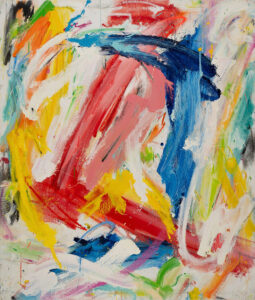 Gís Marí | Tango entre rio e mar | 2023-2024
Gís Marí | Tango entre rio e mar | 2023-2024
You spend months, sometimes years, on a single painting and destroy those you aren’t satisfied with. Can you explain this rigorous process and how it contributes to the quality of your work?
I need this time to get in contact with the painting and develop a relationship.
Also, with the use of oil paint, each layer of paint needs time to dry before I can apply the next one.
When working on a painting, I am a perfectionist. Every inch of the canvas needs to contribute to the whole.
In order to achieve that, I look, paint, erase, and repaint infinitely.
That takes a lot of time.
Could you share your thoughts on the relationship between psychology and art, especially considering your background in psychology studies?
What I liked about psychology was the use and exploration of empathy. As an artist, being empathetic is important; a piece of art doesn’t come merely from yourself.
It is valuable to listen to others, whether directly or through books or other media.
Weigh their thoughts, explore them, and eventually compose your own.
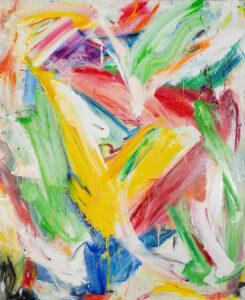 Gís Marí | Tudo é inventado, menos a verdade | 2023
Gís Marí | Tudo é inventado, menos a verdade | 2023
What advice would you give to aspiring artists who are trying to find their own voice and style in today’s art scene?
Don’t be afraid to be alone. Find your inner voice and elaborate on that.
Listen to others, but don’t let them direct you. Always keep your freedom.
Work, sweat, and don’t give up. Being an artist is not as sexy as it seems to the outside world.
It is hard work, often done in solitude, and is a constant struggle.
But when you succeed, it is the most beautiful thing there is.
Creating is magic.
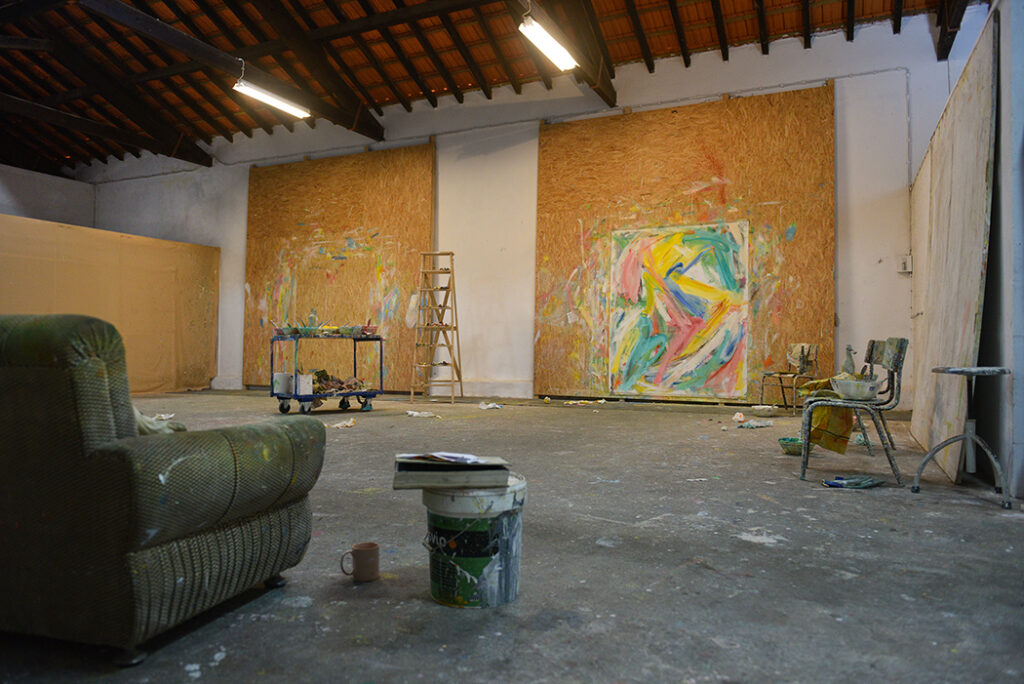

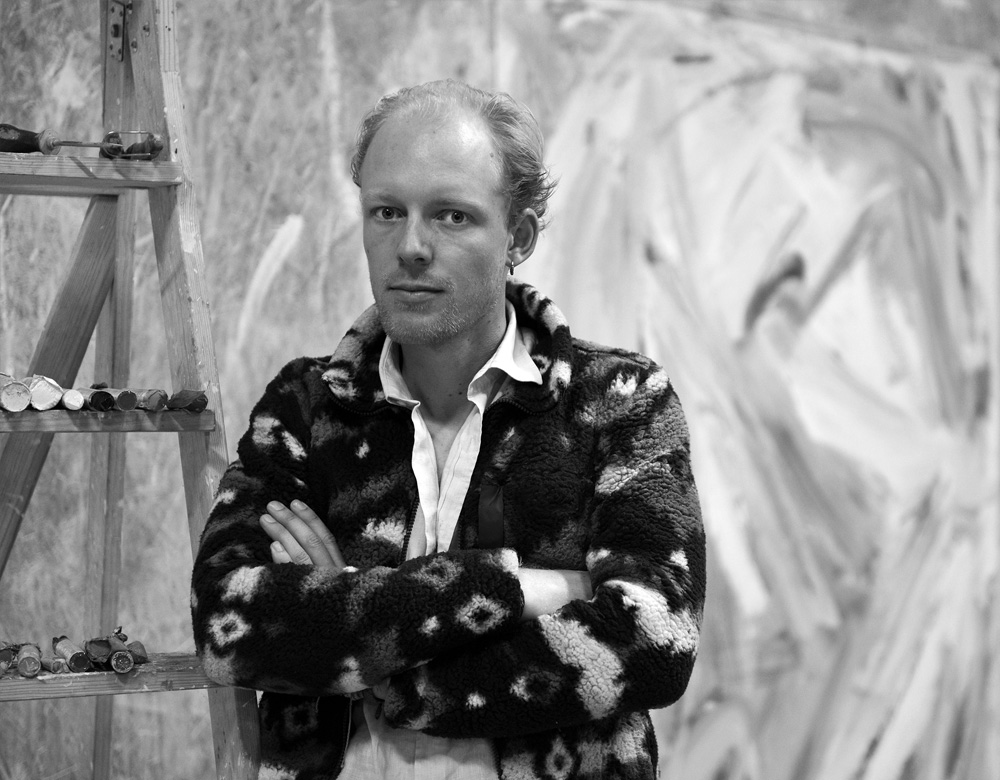
Leave a Reply